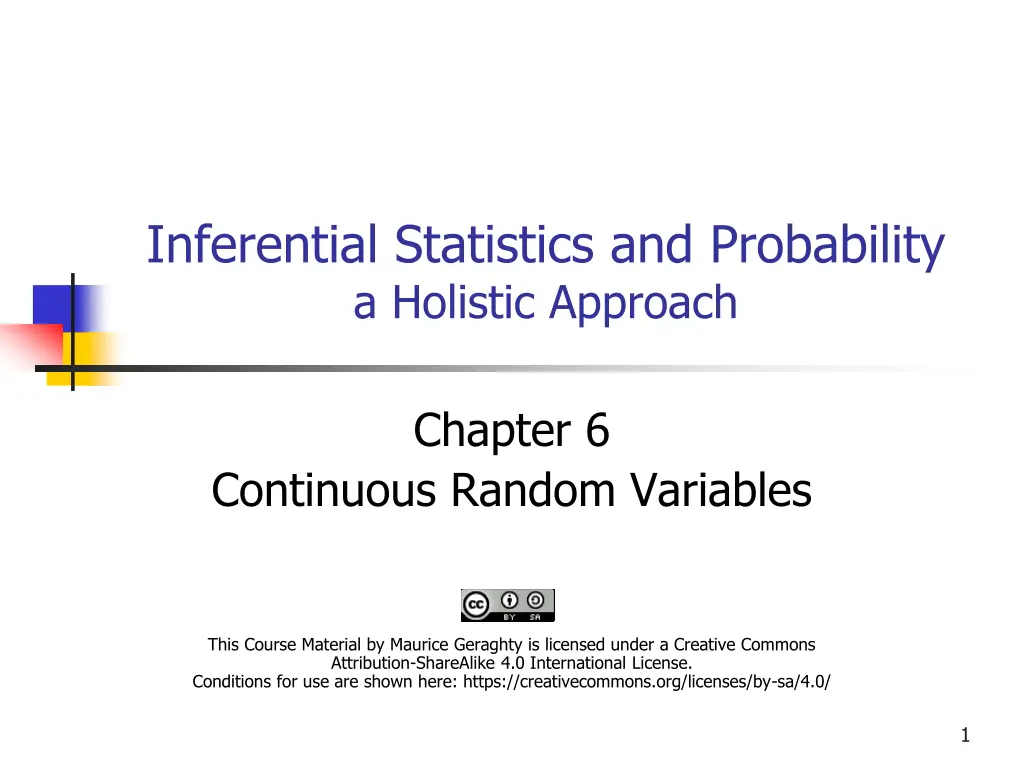
Understanding Continuous Random Variables and Distributions
Explore the concept of continuous random variables, distributions, and their applications in inferential statistics. Learn about exponential distributions, relationship between Poisson and exponential distributions, and examples illustrating these concepts. Dive into the probabilities associated with continuous random variables and their real-world implications.
Download Presentation

Please find below an Image/Link to download the presentation.
The content on the website is provided AS IS for your information and personal use only. It may not be sold, licensed, or shared on other websites without obtaining consent from the author. If you encounter any issues during the download, it is possible that the publisher has removed the file from their server.
You are allowed to download the files provided on this website for personal or commercial use, subject to the condition that they are used lawfully. All files are the property of their respective owners.
The content on the website is provided AS IS for your information and personal use only. It may not be sold, licensed, or shared on other websites without obtaining consent from the author.
E N D
